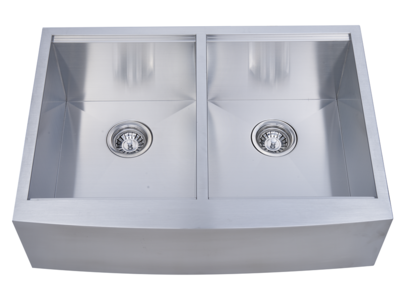
Materials for Handmade Sinks
Handmade sinks are a popular choice for those looking to add a unique and high-quality touch to their kitchens or bathrooms. The material you choose for your handmade sink can significantly impact its appearance, durability, and maintenance requirements. In this article, we explore the different materials used in handmade sinks, along with their respective benefits and drawbacks.
Benefits:
Durability: Stainless steel is highly resistant to rust, corrosion, and stains, making it an excellent choice for kitchen sinks.
Maintenance: Easy to clean and maintain with regular household cleaners.
Aesthetic: Offers a sleek, modern look that complements various kitchen styles.
Price: Generally more affordable compared to other materials, though high-quality stainless steel can be more expensive.
Drawbacks:
Noise: Can be noisy when dishes or utensils are dropped into the sink.
Scratches: Prone to scratches, though these can often be buffed out.
Benefits:
Aesthetic: Copper sinks offer a warm, rustic appearance that can add character to any kitchen or bathroom.
Antibacterial Properties: Naturally antibacterial, reducing the risk of bacterial growth.
Patina: Develops a unique patina over time, adding to its charm.
Drawbacks:
Maintenance: Requires regular cleaning and polishing to maintain its appearance.
Price: Generally more expensive than stainless steel.
Benefits:
Durability: Highly resistant to scratches, chips, and stains.
Aesthetic: Offers a glossy, smooth finish that can enhance the look of any kitchen or bathroom.
Maintenance: Easy to clean with non-abrasive cleaners.
Drawbacks:
Weight: Heavier than other materials, which may require additional support during installation.
Price: Can be quite expensive, especially for custom designs.
Benefits:
Aesthetic: Provides a luxurious, natural appearance that can elevate the look of your space.
Durability: Highly resistant to heat and scratches.
Drawbacks:
Maintenance: Requires regular sealing to prevent stains and maintain its appearance.
Price: Generally the most expensive option due to the cost of the material and the labor-intensive installation process.
Benefits:
Unique Design: Each sink is crafted by skilled artisans, offering a one-of-a-kind appearance.
Durability: The hammering process strengthens the metal, making it more resistant to dents and scratches.
Aesthetic: Adds a rustic charm and unique texture to the kitchen or bathroom.
Drawbacks:
Maintenance: Requires regular cleaning to maintain its appearance.
Price: Typically more expensive due to the craftsmanship involved.
When selecting a material for your handmade sink, consider the following factors:
Usage: Determine how often and for what purpose the sink will be used.
Aesthetic: Choose a material that complements the overall design of your kitchen or bathroom.
Maintenance: Consider how much time and effort you are willing to invest in maintaining the sink.
Budget: Factor in the handmade sink price and ensure it fits within your budget.
Handmade sinks offer a unique blend of functionality and aesthetic appeal, making them a worthwhile investment for any home. By understanding the benefits and drawbacks of different handmade sink materials, you can make an informed decision that best suits your needs.
Stainless Steel
Benefits:
Durability: Stainless steel is highly resistant to rust, corrosion, and stains, making it an excellent choice for kitchen sinks.
Maintenance: Easy to clean and maintain with regular household cleaners.
Aesthetic: Offers a sleek, modern look that complements various kitchen styles.
Price: Generally more affordable compared to other materials, though high-quality stainless steel can be more expensive.
Drawbacks:
Noise: Can be noisy when dishes or utensils are dropped into the sink.
Scratches: Prone to scratches, though these can often be buffed out.
Copper
Benefits:
Aesthetic: Copper sinks offer a warm, rustic appearance that can add character to any kitchen or bathroom.
Antibacterial Properties: Naturally antibacterial, reducing the risk of bacterial growth.
Patina: Develops a unique patina over time, adding to its charm.
Drawbacks:
Maintenance: Requires regular cleaning and polishing to maintain its appearance.
Price: Generally more expensive than stainless steel.
Fireclay
Benefits:
Durability: Highly resistant to scratches, chips, and stains.
Aesthetic: Offers a glossy, smooth finish that can enhance the look of any kitchen or bathroom.
Maintenance: Easy to clean with non-abrasive cleaners.
Drawbacks:
Weight: Heavier than other materials, which may require additional support during installation.
Price: Can be quite expensive, especially for custom designs.
Stone (Granite, Marble, Soapstone)
Benefits:
Aesthetic: Provides a luxurious, natural appearance that can elevate the look of your space.
Durability: Highly resistant to heat and scratches.
Drawbacks:
Maintenance: Requires regular sealing to prevent stains and maintain its appearance.
Price: Generally the most expensive option due to the cost of the material and the labor-intensive installation process.
Hand-Hammered Metal (Copper, Stainless Steel)
Benefits:
Unique Design: Each sink is crafted by skilled artisans, offering a one-of-a-kind appearance.
Durability: The hammering process strengthens the metal, making it more resistant to dents and scratches.
Aesthetic: Adds a rustic charm and unique texture to the kitchen or bathroom.
Drawbacks:
Maintenance: Requires regular cleaning to maintain its appearance.
Price: Typically more expensive due to the craftsmanship involved.
Choosing the Right Material
When selecting a material for your handmade sink, consider the following factors:
Usage: Determine how often and for what purpose the sink will be used.
Aesthetic: Choose a material that complements the overall design of your kitchen or bathroom.
Maintenance: Consider how much time and effort you are willing to invest in maintaining the sink.
Budget: Factor in the handmade sink price and ensure it fits within your budget.
Conclusion
Handmade sinks offer a unique blend of functionality and aesthetic appeal, making them a worthwhile investment for any home. By understanding the benefits and drawbacks of different handmade sink materials, you can make an informed decision that best suits your needs.





